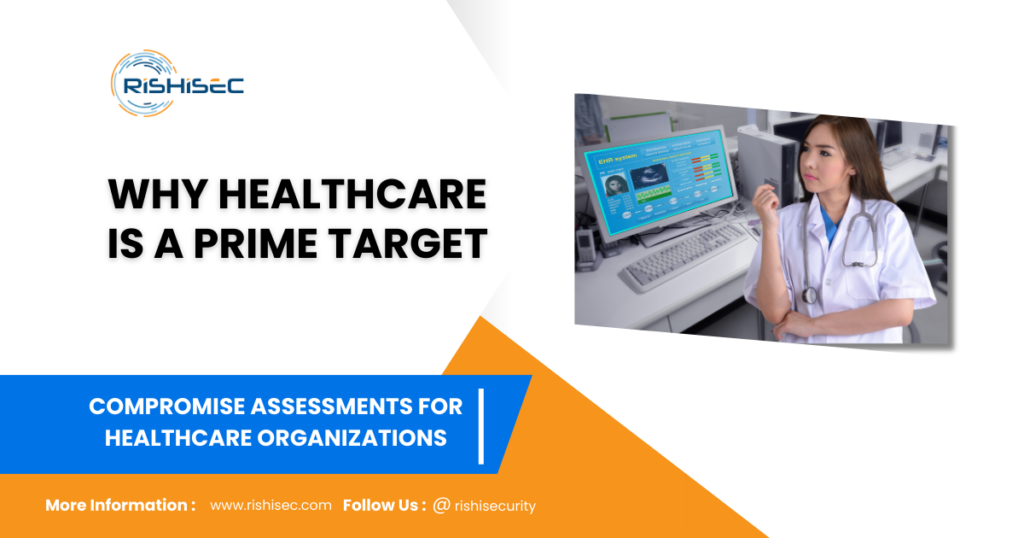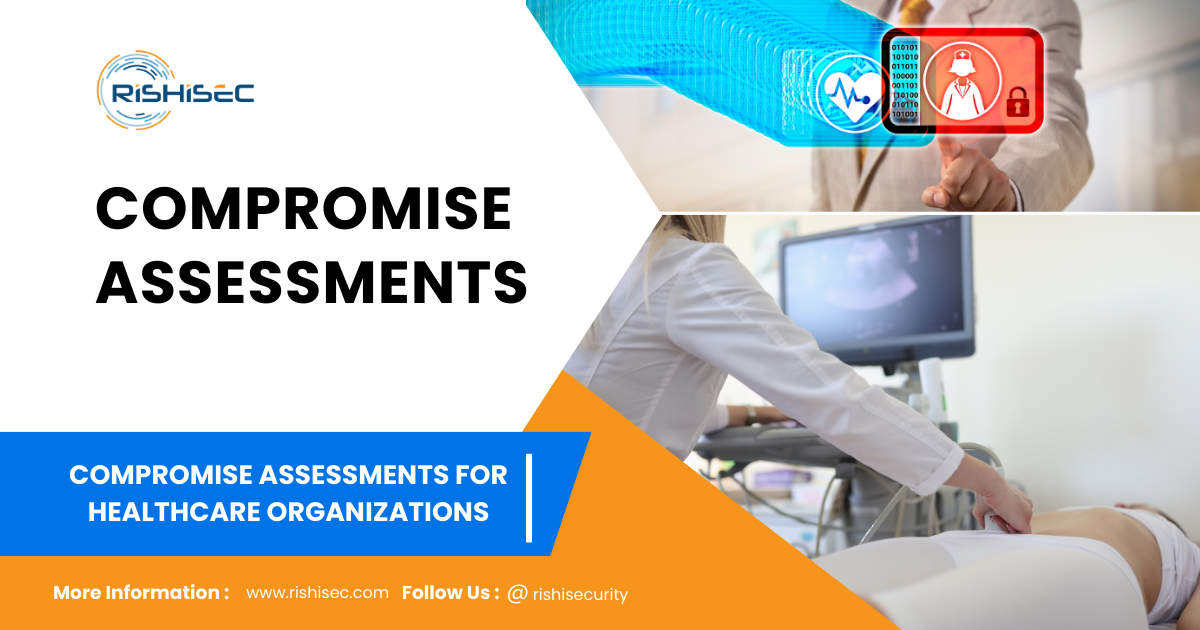Contents
Compromise Assessments for Healthcare Organizations
In today’s healthcare landscape, data breaches and cyber threats are more prevalent than ever. With the rise in electronic health records (EHRs) and digital transformation, healthcare organizations must prioritize cybersecurity to protect sensitive patient information. One of the most effective tools in this defense strategy is the Compromise Assessment (CA). This article delves into the role of CAs in safeguarding healthcare data and provides actionable strategies for integrating them into an organization’s cybersecurity framework. So compromise assessments for healthcare organizations is always necessary.
Why Healthcare is a Prime Target

Healthcare organizations are highly lucrative targets for cybercriminals. Sensitive data like patient records, insurance details, and financial information fetch high prices on the dark web. Unlike sectors with stronger IT frameworks, healthcare has traditionally underinvested in cybersecurity, making it more vulnerable to sophisticated attacks. This vulnerability is compounded by the fact that patient care cannot afford to be disrupted, leaving organizations with fewer options when faced with a breach.
The Role of Compromise Assessments
A Compromise Assessment is an in-depth investigation that determines whether a healthcare organization has been compromised, identifies any current threats, and assesses potential vulnerabilities. It helps ensure that breaches, if present, are isolated and remediated before any further damage can occur.
Key components of a Compromise Assessment include:
- Threat Identification: Detecting current cyber threats, malware, or unauthorized access.
- Vulnerability Assessment: Identifying weak points in the IT infrastructure.
- Recommendations for Remediation: Offering actionable insights on how to strengthen defenses and prevent future compromises.
For healthcare organizations, compromise assessments are particularly vital because they address specific regulatory concerns, such as HIPAA compliance and patient data integrity. Regular assessments provide a proactive approach to identifying and mitigating risks, ensuring that healthcare organizations remain compliant while securing their operations.
Common Healthcare Cybersecurity Threats

Common Healthcare Cybersecurity Threats
Some common cyber threats facing healthcare organizations include:
- Ransomware Attacks: Locking down critical systems in exchange for a ransom, often crippling healthcare services.
- Phishing Schemes: Targeting healthcare employees to gain unauthorized access to systems and data.
- Insider Threats: Healthcare employees accidentally or deliberately compromising sensitive data.
- Outdated Systems: Legacy software that lacks modern security measures, creating vulnerabilities.
How to Integrate Compromise Assessments into Your Cyber security Strategy

Healthcare organizations should integrate CAs as part of a comprehensive cyber security strategy, alongside:
- Continuous Monitoring: Real-time threat detection and response tools to prevent breaches.
- Regular Staff Training: Teaching staff to recognize phishing attempts and security best practices.
- Third-Party Risk Assessments: Evaluating risks posed by vendors and partners with access to your network.
By embedding compromise assessments into your routine security processes, healthcare organizations can stay ahead of emerging threats, protect sensitive patient data, and maintain operational continuity.
Case Study: A Hospital’s Successful Cyber Defense
One regional hospital implemented routine compromise assessments as part of its cyber security efforts. After a phishing attack bypassed its initial defenses, a CA uncovered the full extent of the breach, leading to a swift resolution before patient records were accessed. The assessment also identified a legacy system vulnerability, which was promptly remediated, ensuring future breaches would be less likely.
This proactive approach allowed the hospital to not only resolve the issue but also enhance its cyber security measures for the future.
Regulatory Compliance: The HIPAA Factor
For healthcare organizations, compliance with regulations like HIPAA is not optional. Failing to secure patient data can result in significant fines and reputational damage. Regular CAs help identify compliance gaps, ensure that data protection measures meet regulatory requirements, and provide the documentation necessary to demonstrate compliance during audits.
Tailored Solutions for Healthcare
A successful compromise assessment must be tailored to the unique challenges of healthcare. This includes understanding the importance of protecting life-saving equipment connected to the network, ensuring operational continuity, and complying with stringent healthcare regulations.
By addressing these specific needs, CAs provide a roadmap to more resilient cybersecurity infrastructures for healthcare organizations.
Conclusion: Stay One Step Ahead of Threats
Healthcare organizations cannot afford to take cybersecurity lightly. By incorporating regular compromise assessments into your strategy, you not only reduce the risk of breaches but also ensure compliance with industry regulations. Start a proactive defense today with SentryCA, a specialized solution that helps healthcare organizations conduct thorough compromise assessments, strengthen their cybersecurity posture, and protect sensitive patient data.
CTA
Start your free trial of SentryCA today. Our healthcare-focused compromise assessment tool is designed to protect patient data, secure your operations, and keep you HIPAA-compliant. Don’t wait for a breach—take a proactive approach to your cybersecurity by requesting a free trial now.
You may also like reading this post, Deep Dive into Becoming a Proactive Threat Hunter: A Tactical Roadmap


